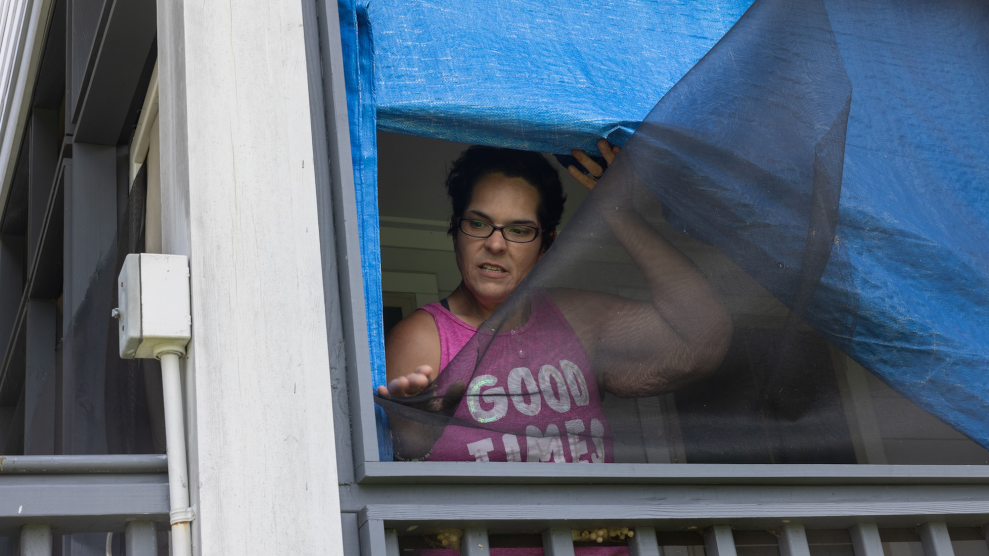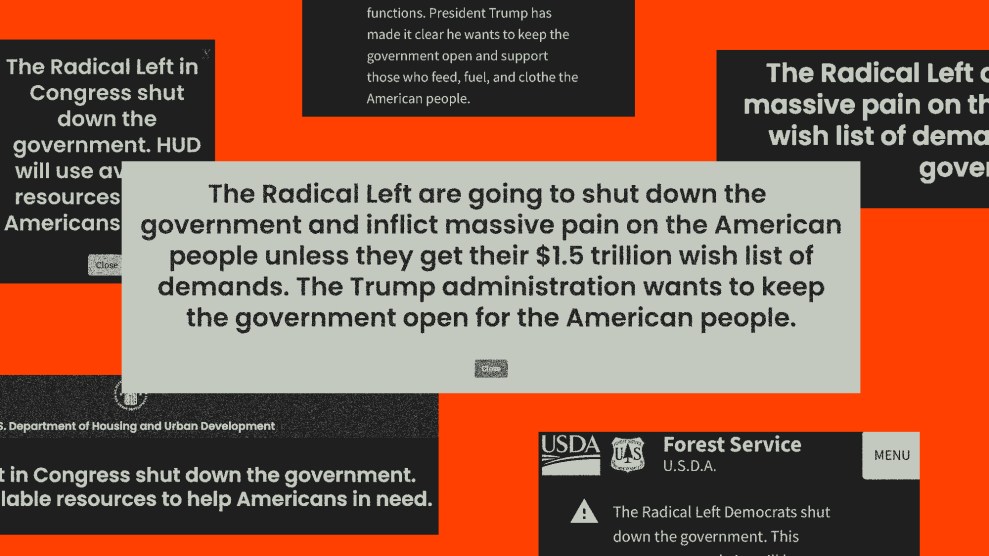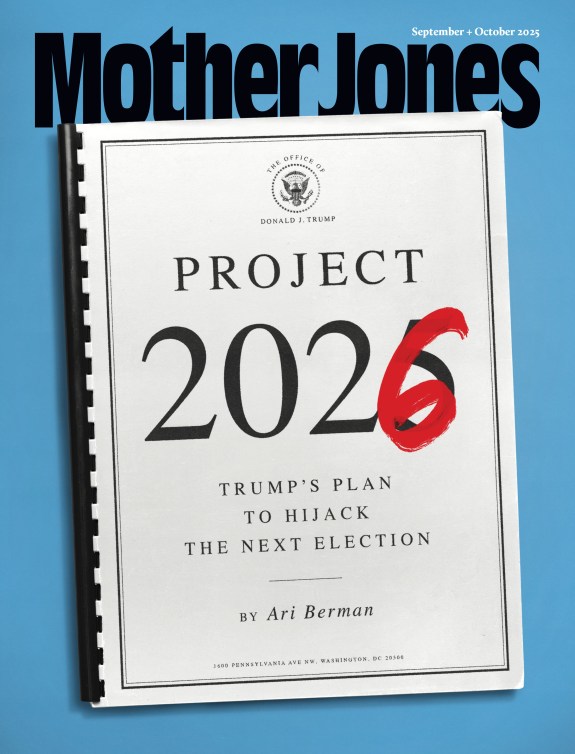On Friday, after winning
the Nobel Peace Prize, Mohammad ElBaradei, head of the International Atomic
Energy Agency (IAEA) said the award is a much needed “shot in the arm”
for him and the agency. The boost couldn’t come at a better time—the past
year has been a disastrous one for the non-proliferation regime. The spread
of nuclear weapons poses the greatest threat to U.S. and world security—and
we’d better step up our efforts to address it.
One year, one week, and what seems an era ago, John Kerry and George W. Bush
stood before the nation
on a televised debate and agreed that “the single most serious threat to
the national security of the United States” was nuclear proliferation.
The answer makes sense. If you accept George
Kennan’s definition of national security (a nation’s ability “to pursue
its internal life without serious interference”) there are remarkably few
threats that could seriously disrupt our way of life. Among them, we may list
nuclear and biological terrorism, pandemic disease (such as avian
flu), and nuclear
war. And while the possibility of devastating biological scenarios is real,
the most potentially destructive threat to our society and our lives
still lies in nuclear attacks.
If you were to start from scratch in designing a plan for our nation’s security,
non-proliferation mechanisms would no doubt be at the center of that strategy.
The primacy of the nuclear threat is generally well-understood by academics
(at least if the Princeton
Project on National Security, which I attended last week, is any
indication). This primacy is also understood by the American public: when
asked to prioritize the “most important foreign policy goals”
from a list of thirty, respondents placed “keeping nuclear weapons away
from countries and groups that are hostile to the U.S. and our allies”
first. Two other nuclear concerns made the top five; meanwhile protecting
oil supplies, establishing a stable and secure government in Iraq, and spreading
democracy failed to crack the top fifteen. It’s no accident that, at least before
the rationales began to multiply, the administration built its case for war
against Iraq based on Saddam’s WMD program—and the oft-cited
image of the mushroom cloud.
So, given the relative consensus around the primacy of the nuclear threat among
the American public, academics, and policy makers from both parties, why do
we devote so few resources and so little attention to preventing proliferation?
The State Department received
$0.4 billion to coordinate programs in non-proliferation and terrorism last
year; administration
requested $1.6 billion for Department of Energy threat reduction efforts
(and another $0.4 billion for Pentagon-based programs.) But this is loose change
when compared with the $16.6 billion requested this year to maintain our nuclear
arsenals or the $8.8 billion to construct a ballistic missile defense system.
These non-proliferation programs have seen at most modest increases while the
overall defense budget has climbed from $301 billion in 2001 toward $419 billion
requested in 2006 (this increase does not include spending on Iraq or Afghanistan,
which are together projected to cost $70 billion in a 2006 supplemental.) Investing
the $6 billion we spend in one month in Iraq into non-proliferation initiatives
could transform our security for years to come.
A Rising Threat
There couldn’t be a more critical time for such an investment. Consider that
in the past few years:
- North Korea has acquired nuclear weapons.
- Iran has continued to patiently exploit gaps in the non-proliferation regime
and is developing an arsenal. - Russia has, in accordance with the Bush-Putin agreement, placed thousands
of weapons in storage, where many of them remain assembled and under imperfect
surveillance. - China has pursued expensive program to modernize its arsenal.
- India has gained U.S. recognition (and tacit support) of its nuclear activities.
- The United States is poised to embark on the construction of a new
generation of nuclear bunker busters, which could lead others to open new
weapon development. - A.Q. Khan, a Pakistani citizen, has been implicated in a global black market
for nuclear technology. - The Nuclear Non-Proliferation Treaty Review Conference, which occurs only
twice a decade, collapsed in May, leaving the international community ill-prepared
to face current and future threats. - “Preventive war” has proven an ineffective, and prohibitively
expensive, non-proliferation strategy in Iraq, and is not
feasible in Iran.
Investing in Non-Proliferation
What could the United States do with its additional funds to address non-proliferation?
Without getting into the nuts and bolts, there are several areas where a capital
infusion might transform our capacities:
- Initiate a Manhattan Project to roll back the Manhattan Project.
The United States should establish several non-proliferation research centers”
focused on technical innovations, and especially on more effective inspection
technologies. The weapons labs currently perform some non-proliferation research,
but their role should be further transformed. Technological fixes are no solution
to diplomatic problems, but can facilitate them: in Reagan’s formulation of
“trust but verify,” agreements become easier and more secure as
verification becomes more effective. - Increase funding for threat reduction. Our threat reduction programs
with Russia and other allies have been, at a cost of $2 billion per year,
among the best investments in our security, but have received inconsistent
support from the administration. Progress on this front has slowed, prompting
groups such as the Center for American Progress to recommend doubling
the threat reduction budget and expanding the program to other at-risk
countries. Equally important is high-level diplomatic attention: the President’s
top goal vis a vis Russia should be to convince Vladimir Putin to cut through
red tape in his ministries. - Bolster the International Atomic Energy Agency (IAEA). The IAEA is
our first line of defense against proliferation, but still operates on a shoestring
budget ($385 million this
year, even including $120 million in additional ‘voluntary’ contributions).
As the responsibilities of the IAEA expand (including the additional protocol)
it must be fully supported; the Center for American Progress recommends increasing
the Safeguards and Security Budget by 50 percent, and the United States
should play a leading role. - Control the nuclear fuel cycle. On
Wednesday, ElBaradei argued that the best way to prevent proliferation
(with Iran as the exemplary case) is to guarantee nuclear fuel to countries
that commit to not producing it themselves. There are legitimate concerns
about whether such a plan would be verifiable, but investing in stronger inspection
mechanisms, and establishing a fuel bank under the IAEA, would facilitate
this policy shift. According to ElBaradei, this program would solve “at
least 80 percent of the problem.”
Critics of arms control express skepticism about our ability to verify nuclear
agreements. But while no inspection capacity is ever foolproof, it can be effective:
in Iraq, the much maligned inspection regime had worked to deter and eliminate
Saddam’s WMD programs. The administration should take this rare moment of consensus
to transform technical capacities—and political opportunities—to address
our top security threat.









